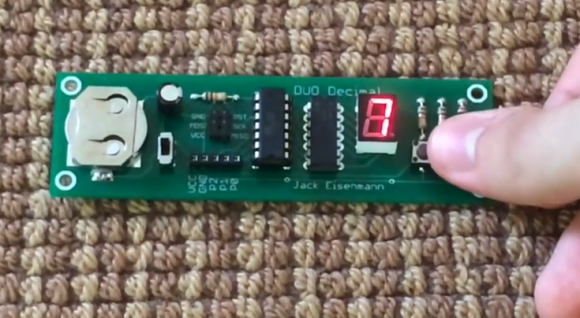
If you’ve ever struggled to fit your program into the RAM and ROM of a small micro, you’ll appreciate [Jack’s] creation, the DUO Decimal. DUO Decimal is a small single board computer running on an Atmel ATtiny84. The ’84 has 8KB flash memory, 512 bytes of SRAM, and 512 bytes of EEPROM. Not as bad as a the old days, but still tight by today’s standards.
User input to the DUO Decimal is through two buttons. Output is via a 7 segment numeric LED display. Not the easiest for typing in long programs, but on par with the switches and blinkenlights of the past. 3 bits of GPIO are available for connections to your own circuits.
[Jack] didn’t just design a board, he designed an entire language. DUO Decimal is programmed in an interpreted language called DUO Decimal Numeric Code (DDNC). There are 47 DDNC commands, covering everything from basic math to list manipulation. Programs can be entered through the buttons, or save your fingertips by downloading them through the AVR isp interface. The entire C code for the DUO Decimal, including the DDNC interpreter is available on [Jack’s] website.
[Jack] created several example DDNC programs, including a 6 function calculator with trigonometry, a Mandelbrot set tester, and an implementation of the rock paper scissors game. There’s even a platformer action game, though graphics on a single 7 segment display are simplistic to say the least.
Continue reading “DUO Decimal – A Minimalist Single Board Computer”










